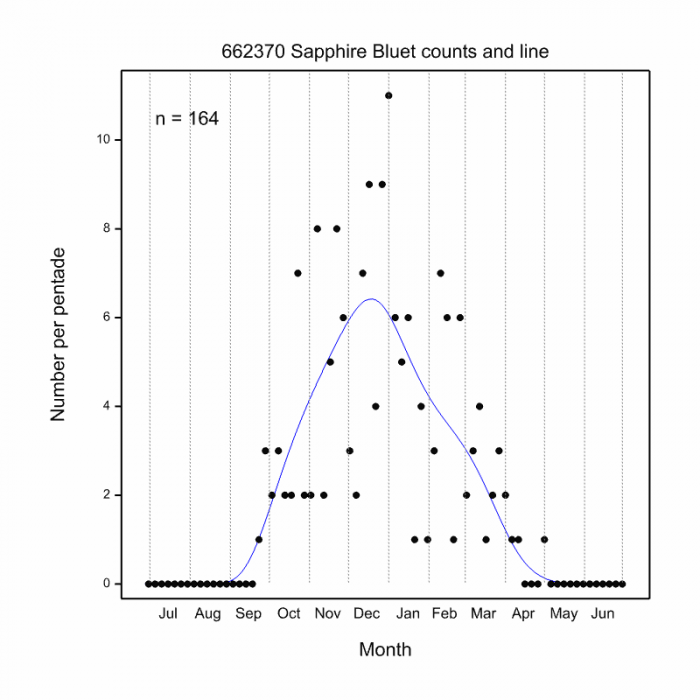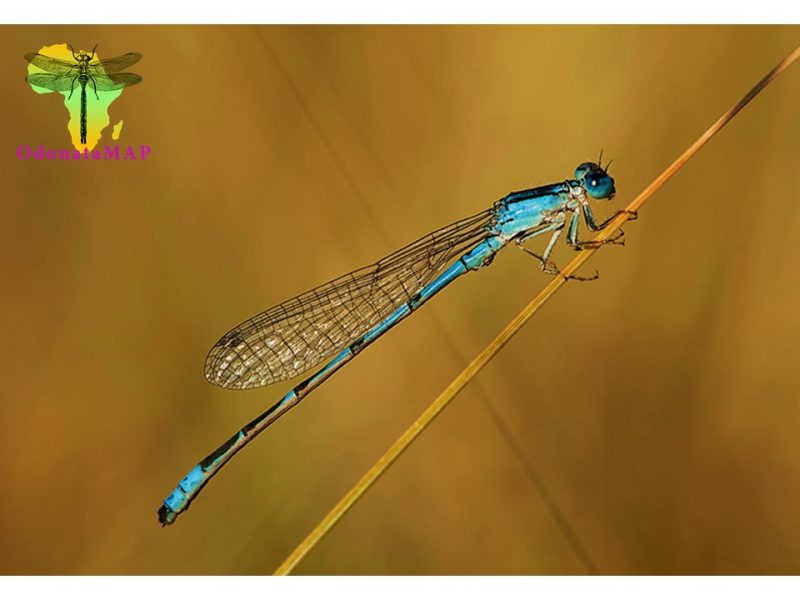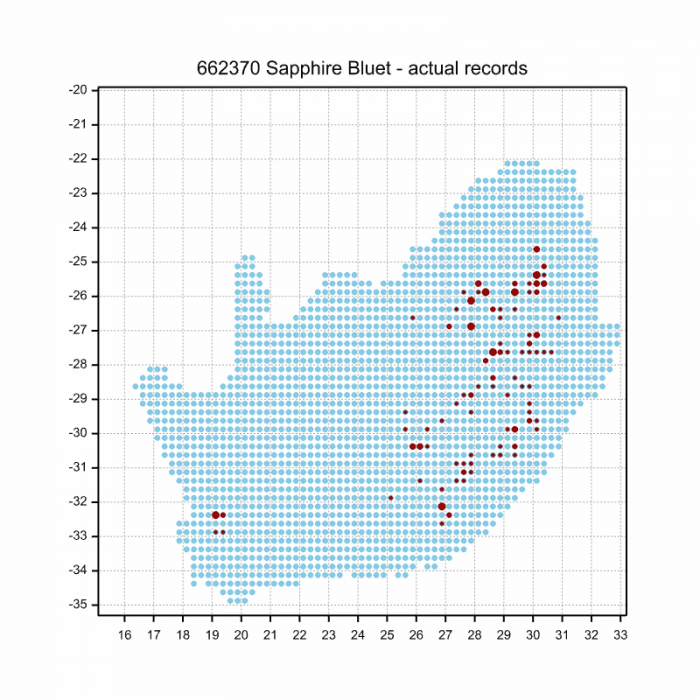View the above photo record (by Wil Leurs) in OdonataMAP here.
Find the Sapphire Bluet in the FBIS database (Freshwater Biodiversity Information System) here.
Family Coenagrionidae
Africallagma sapphirinum – SAPPHIRE BLUET
Identification
Very small
Length up to 28mm; Wingspan reaches 40mm.
Bright blue and black colouration. Similar to other Bluet species. Both sexes are easily recognised by the diagnostic, broad black abdomen markings.
Click here for more details on identification.

Near Kokstad, KwaZulu-Natal
Photo by Alan Manson
Habitat
Found in highveld grassland, where its natural habitats are vegetated ponds, dams and lakes. Favours water bodies with floating and half submerged aquatic plants.
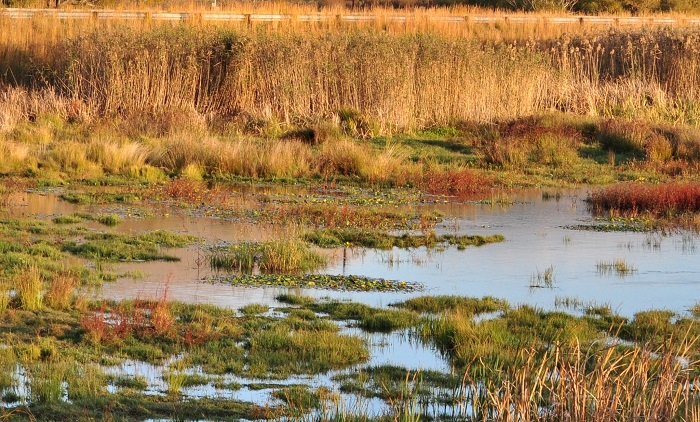
Photo by Ryan Tippett
Behaviour
Sits close to the water on vegetation. It is an alert and weary species. Flies low across the water when disturbed.
On the wing from September to April (see Phenology below).
Status and Conservation
Africallagma sapphirinum is a common but localised species. It is listed as Least concern on the IUCN Red List of Threatened Species. The Sapphire Bluet is moderately sensitive to habitat disturbance. It occurs commonly at suitable man-made dams and ponds, including those with some alien plant growth. Within its habitat range, this species has no doubt benefited from making use of artificial impoundments.
Distribution
It is endemic to the highveld of South Africa, where it is locally common. There is an isolated population in the Cedarberg, Western Cape.
Below is a map showing the distribution of records for Sapphire Bluet in the OdonataMAP database as at February 2020.
The next map below is an imputed map, produced by an interpolation algorithm, which attempts to generate a full distribution map from the partial information in the map above. This map will be improved by the submission of records to the OdonataMAP section of the Virtual Museum.
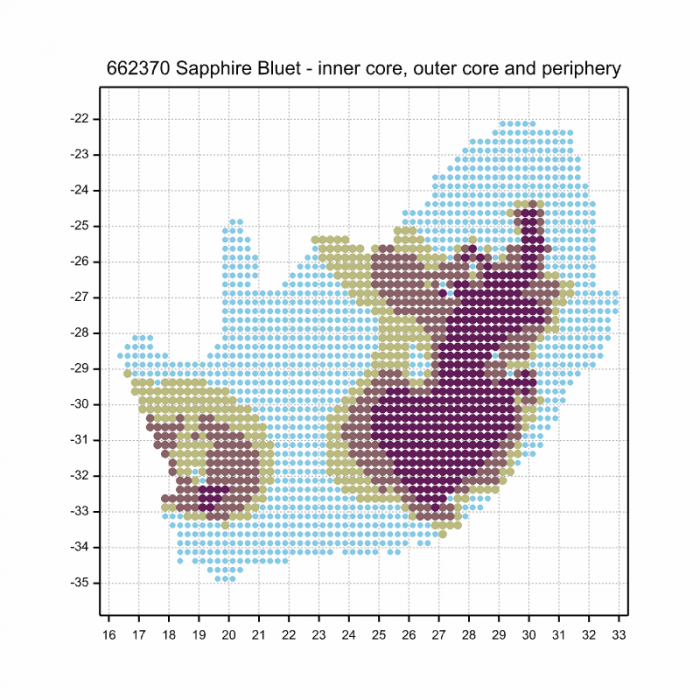
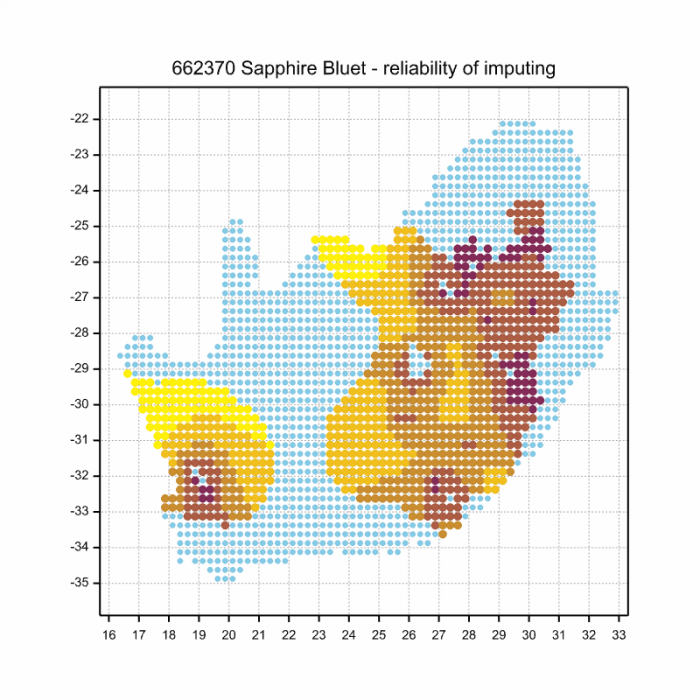
Ultimately, we will produce a series of maps for all the odonata species in the region. The current algorithm is a new algorithm. The objective is mainly to produce “smoothed” maps that could go into a field guide for odonata. This basic version of the algorithm (as mapped above) does not make use of “explanatory variables” (e.g. altitude, terrain roughness, presence of freshwater — we will be producing maps that take these variables into account soon). Currently, it only makes use of the OdonataMAP records for the species being mapped, as well as all the other records of all other species. The basic maps are “optimistic” and will generally show ranges to be larger than what they probably are.
These maps use the data in the OdonataMAP section of the Virtual Museum, and also the database assembled by the previous JRS funded project, which was led by Professor Michael Samways and Dr KD Dijkstra.
Phenology
